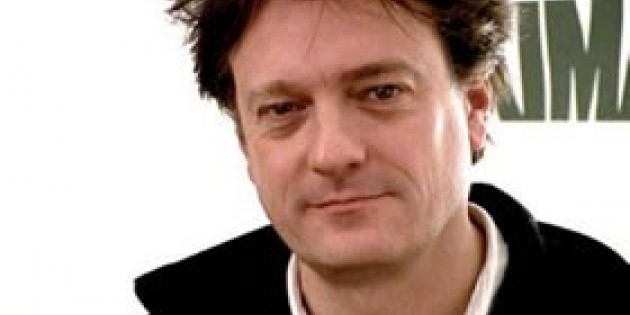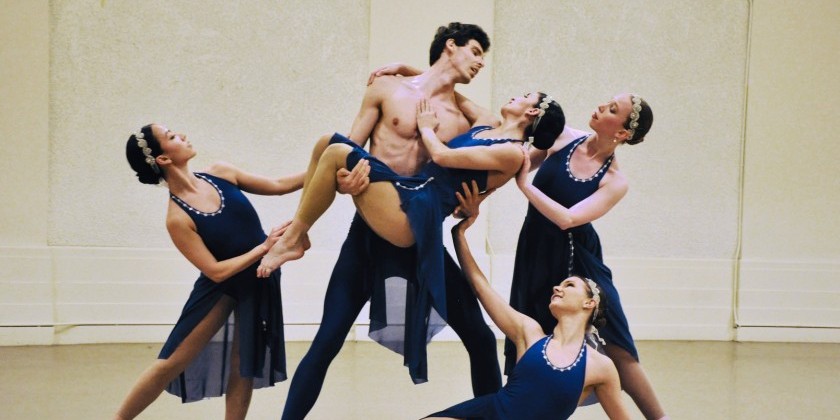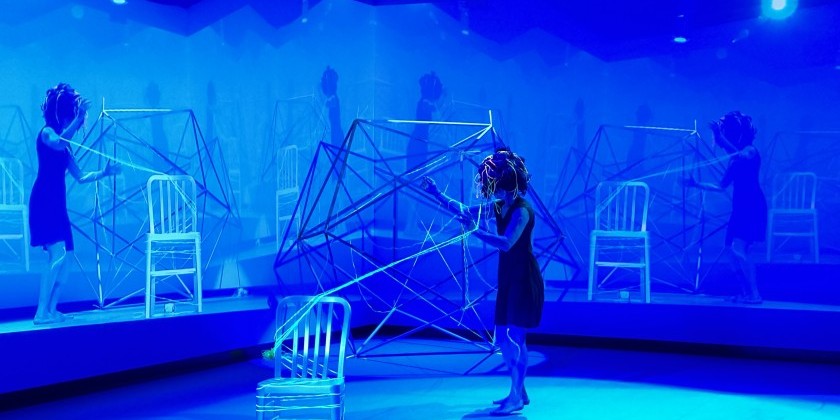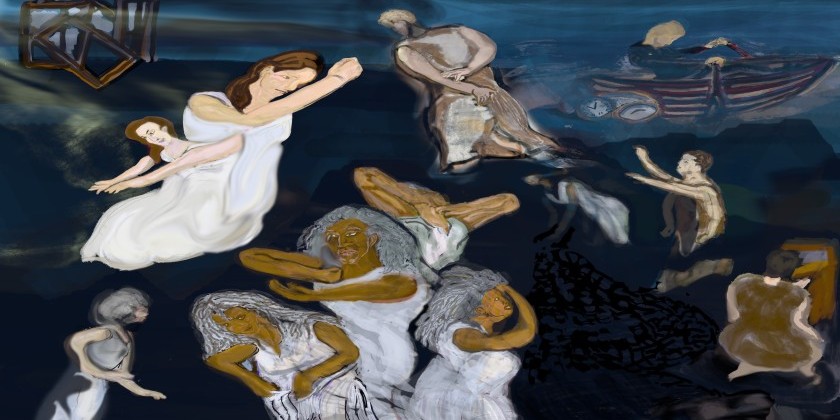AUDIENCE REVIEW: Thierry de Mey

Company:
Thierry de Mey
Performance Date:
January 30, 2010
Company
Thierry de Mey
Performance Date
January 30, 2010
Venue / Location
Maison de la Musique in Nanterre (Paris area)
Your Occupation:
Director, Creator, Choreographer, Teacher, Performer
Last time you moved your body:
two minutes ago
Have you ever seen this company/ before?
Tell us a bit about your history with this group/performer?
I went to see the Belgian artist Thierry de Mey's music, movement and film last night at Nanterre's Maison de la Musique just outside of Paris. It is the first time I have seen his work.
Describe as plainly and as specifically as you can what you actually saw. We are going for description without judgement.
There is no need for complete sentences, phrases and word lists are fine. You can describe these elements or anything you can think of: the artists, the kinds of movement, the qualities of the movement, the use of the stage/space, the musicality/timing...
The first piece was a dance film about 5 minutes long (from the early 80s) that was listed by the name "Dom svobode." A group of about 8 dancers connected by rope harnesses were dancing horizontally against what looks like the side of a cliff. The dancers don't show the effort that must be involved, but you still see the effect on the body of this shift in its relationship with gravity. It seems appropriate that Magritte's bowler hats stayed calmly on the men's heads even at a 90° angle. With such an obvious reference to Magritte's painting and in a work that is so suspended and air-dwelt, one would have thought we would see more sky and air. But the artists chose to accent the rock. We see gravel and dirt falling away under the dancers' feet, and hear it in the soundscape, which makes us feel it even more viscerally. This use of sound as music, or the music of sound, is satisfying, and strongly enhances the experience, transferring their vibrations into our own bodies. The film seemed to cut off abruptly at the end, and left me hanging, suspended, horizontally, a little too far off the ground. It was an interesting glance into a world not my own.
I believe that de Mey said, in his talk after the program, that the second piece, "Tippeke" was also from the 80s. It seems as if it were the result of an intimate collaboration between de Mey and Anne Teresa de Keersmaeker. I have only seen some of her group work for the stage and while I was not surprised by the power in her movement, I was not expecting the delicacy and fineness of expressive articulation she so fully embodied. The beauty of the madness of the body that does not fit together anymore with itself or with its mind, the body that cannot bear itself. It touches us, uncomfortably in all its sensuality, and I felt pity for her. Her story, Tippeke's story, was a simple one, of Tippeke moving through a beautiful autmn or winter wood, not wanting to go home, of the dog who does not want to bite her, of the stick that does not want to hit the dog, of the fire that does not wish to burn the stick, etc. No, no, they say. And the body does not fit itself, as if the inside of the body cannot find its place within its exterior frame, its exterior form. The sound of her feet in the branches and dirt, lovely, the sound of her voice, her breath speaking the words, the cello played live by Eric-Maria Couturier opening and closing the work with soundless gesture, the full soundscape of the score, again so organically integrated into the work that it enhances the experience viscerally yet after a single viewing leaves little trace that can be distinguished apart from the overall work and its impressiond. Fantastic that! The movement is seen and hidden between, behind and through the trees, but she travels far and while she seems a forest creature, she also hovers near the edges of highways, in fields and tunnels, like a lost deer. The beauty of the mist of her breath in the cold -- to see the breath as a dancer moves is a lovely thing... There is a moment of sensual satisfaction when the cat finally says "yes", oh yes, it does want to eat that mouse. And that "yes" changes the entire story thread to an affirmation, of violence and embrace, as the mouse eats the chord that ties the cow, etc. And we wonder what kind of home Tippeke is returning to. But she is returning. And it is her home.
Musiques des Tables (Table Music) was great. Three students from the Conservatoire de Reuil-Malmaison performed the work sitting in three black chairs behind three pine colored tables with microphones beneath them. Wearing black, the lighting focused our eyes on the whiteness of their moving hands, their faces and necks, and the tables, and this enhanced the sense of this being as much a dance as a work of music. The gesture of making sound, and the sound of gestures was marked. It was, indeed, as much a dance for hands as it was a musical work. (I couldn't help asking myself what would it be like if the three performers were not all white skinned? Their skin seemed to be choreographed into our experience of the work. But this is perhaps more a question I have in my own work just now... But it reflects how we think, and how we perceive as we view art. I wouldn't have noticed this question about race, or skin color, perhaps, if it weren't a question that I have already been sniffing at in my own universe.) The sounds they make with just their hands on those tables offer an amazing variety that I could not have imagined possible. And as much as de Mey seems to like, or have liked at the time he created the work, keeping away from the harmonic and rhythmic grooves that satisfy with their predictability and allow us to physically, internally, ride on them, he nevertheless gives us just enough of a fugue to leave us wanting more. It was great.
Light Music was the last work of the evening -- and the most recent work presented. It uses computer technology that seems to capture the light reflected on the actual body of the performer, Jean Geoffroy, and reflects it onto the large screen behind him. We see again the use of light on the white skin of the performer dressed in black, moving in an otherwise black box. The performer's body is mostly hidden and certainly de-emphasized in the darkness, so we focus on the gesture and movement his hands make and reflect, and on their patterns in space as projected on the screen. It is a conductor without an orchestra, and it is indeed a dance. Again the score we hear is so much a part of the work, a soundscape that it is hard to recall separate from the overall experience.
De Mey took questions and spoke with the audience afterward. I was glad for that. What touched me the most was the bright openess in his face -- like a child -- when a child had a question to ask. Not condescending, but sincerely open and listening for the mind that asks and seeks. I appreciated learning that part of his questioning and exploration is also focused on the use of tools that were originally intended for other uses -- in particular, for military use. I think it is clear in his work how much joy he takes in questioning everything -- the tools, the forms, their use, the edges between things and their definitions. What a wonderful, questioning mind, and what a beautiful use of it.
--
Ann Moradian
http://www.annmoradian-perspectives.blogspot.com
http://www.affinitiz.com/space/perspectivesinmotion
http://www.ballet-dance.com/phpbb3/viewtopic.php?f=5&t=33944&sid=b5e5b32838dc5df69ca7cce14da96edd











